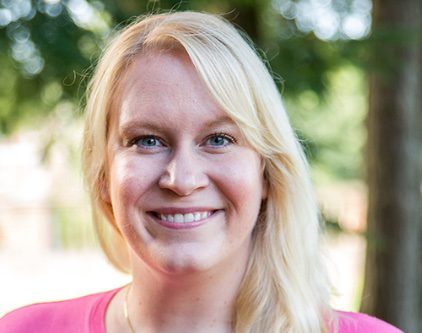I often speak with colleagues, those in my network and students preparing to graduate regarding where they see their career heading, what their goals are and what motivates them. Resoundingly, the majority mention that they feel behind the curve if they are not viewing their careers as the most significant aspect of who they are.
We have been led to believe that you have to be overwhelmingly, consumingly passionate about your chosen career field, but the reality is that our careers are only one piece of who we are holistically. Sure, we should find enjoyment in what we do for a living and we should care deeply about the quality and impact of our work, but when we put the pressure on ourselves for our jobs to fulfill us entirely, it is easy to become disengaged and burnt out!
Approaching lifelong learning as a holistic engagement intervention may be a crucial piece of the answer. As much as you look to continuous learning and development for work, look for continuous learning in your personal life as well! In regard to professional development and lifelong learning, find the sweet spot between learning new skills that support your day-to-day role function, your strategic goals and your personal career interests.
When we consider the term “lifelong learning” it’s easy to get caught up in the feeling that we should only focus on directly applicable and professional upskilling or reskilling that relates to our careers—things such as formal certification, degrees or seminars. Instead, think about the energy and excitement you feel when you tackle a new skill or create something incredible in your personal life. That energy transfers over to so many other tasks and projects and builds your confidence and competence to continue trying new things. The same approach should be used to blend our personal and professional interests and lifelong learning strategies. Leverage the excitement and joy from learning new skills, and think creatively about how you might apply what you’ve learned at both work and in personal experiences.
A few years ago, I realized that no matter how much I enjoy my work (and I do!), I need more creative outlets in my life to keep me balanced. Many years ago, I ran the operations for an animal shelter and learned a lot about what types of social media posts and videos appealed to the community and helped our adoptions increase.
After I left that role, I continued volunteering with other local shelters. Over time, I found myself with less and less time to engage in the creative aspects of volunteering and remembered how much I really enjoyed the work of drafting engaging posts and videos to capture the attention of followers and help animals get adopted. I spent a number of weekends in a row at the shelter and focused on snapping quality pictures and video clips to boost the visibility of the animals to potential adopters. When I got back to work each Monday I realized not only was the energy I felt for approaching my work week much more positive, but I was taking some of the “fun” from my creative outlet and continued learning from the shelter volunteering, and looking for ways to incorporate more fun and positive energy into my day to day tasks too.
Learning doesn’t have to be formal or intensive. I’ve found some of the greatest sparks of creativity and reignition of excitement for work by just playing around for 15 or 20 minutes with a new software or tool. As someone with a passion for adult learning, I had always wanted to experiment with building my own e-courses and content as part of L&D strategies. I had opportunities in other roles to contribute to curriculum design and development, but to actually create the course from start to finish never presented itself.
In my current role, I mentioned to my VP of HR that I wanted to incorporate more e-learning into our L&D efforts emphasizing how that type of customized, on-demand learning could benefit our campus community. She gave me the green light to dive into learning Articulate, and I found that even just spending some time each day on YouTube or other tutorials and then working in Articulate myself, I was able to start creating quality content with each new skill I learned.
We’re now launching our own custom e-courses as part of a broader institutional L&D strategy and framework, and being able to take a few minutes a day to seek out new skills and learning opportunities to continue to enhance our efforts keeps me motivated and shows those around me that I too am continuing to upskill as a lifelong learner!
I make a point to also share the work with our HR team and others around campus so they can not only see my excitement and passion for learning and translating new skills into day-to-day work, but also so they see the benefit of each one of us engaging in lifelong learning. With the skills I’ve learned in e-course creation, I can also look at ways to apply those skills outside of work—perhaps with my church community or local nonprofits to support their needs with such limited resources, as an example.
Understandably, financial resources—whether via work or your personal funds—for lifelong learning can be a constraint. Thankfully, there are many free or low-cost options to seek out new skills development opportunities. YouTube and other online tutorials are a great place to start. You might also consider joining a Reddit thread on a particular skill or topic you are interested in and see how folks are leveraging that knowledge in and outside of work. Or, hop on a quick Zoom call with a friend or colleague and ask them to share something they learned this week. You never know when you may be able to use transferable learning.
You can also start meetings with a fun “learning transfer” icebreaker where everyone shares a new skill they have learned or are in the process of picking up this month and then discuss how others might use that skill if they were to cross-train. Micro-learning approaches can be key here, as there are often not only potential financial limitations. But time and capacity constraints for all of us in the busy lives we live. Blocking five to fifteen minutes a day or even a week can go a long way toward demonstrating your commitment to learning as a holistic practice and influencing those around you to continue to learn as well without feeling overwhelmed with committing to one more thing.
Share what you are learning regularly with your peers, perhaps on your L&D website or during employee meetings, and demonstrate how skills you’ve learned are applicable in and outside the workplace or across team functions. Remember to showcase non-work-related skills too—reinforcing that work and professional titles are not the only thing that defines us and not the only valuable learning we should engage in.
Finally, consider setting up a talent or skills showcase where employees can teach others a new skill or share resources they have found helpful. Get to know your colleagues as people first and employees second. Supporting their holistic skills development is so important to building trust and positive work cultures, and reinforcing the commitment as an L&D professional that learning is and should be fun, engaging and continuous is another huge and important part of building an active learning community and commitment!















